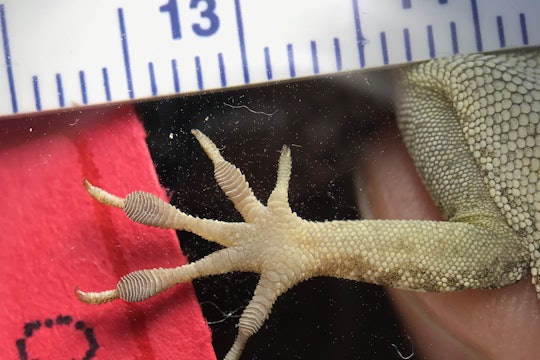
Colin Donihue
Hurricanes are shaping lizard feet all over the world
New study shows that lizards evolve and maintain wider toepads to survive hurricane winds
Two and a half years ago, when biologist Colin Donihue meandered through Turks and Caicos lassoing lizards with dental floss, he couldn’t have predicted how his project would eventually evolve.
His team traveled to the islands to catch and measure lizards. “Lo and behold, three days after we left, the islands were hit by Hurricane Irma, and then Hurricane Maria a couple weeks later,” says Donihue, a postdoctoral researcher at Washington University in St. Louis. His team returned to the island a few weeks later for a rare opportunity.
Climate change is constantly testing the animal kingdom. Sea level rise threatens species with extinction, habitat loss affects behavior, and parents pass along genetic survival tactics to their offspring. But broad changes in climate also bring dangerous weather events, such as hurricanes, that lay their own fingerprints on biology. Can these burdensome but brief events shape the future of animal life in a permanent way? New research examining the toepads of nearly 200 species of Anolis lizards in several countries answers — remarkably — yes.
For Anolis lizards — or anoles — textured toepads can grip smooth surfaces strongly, which helps to navigate lives spent perched in trees. In a 2018 report, Donihue’s team showed that the surviving lizards had statistically larger toepads on average than the population before Hurricanes Irma and Maria. But it was unclear whether that toepad change would stick.
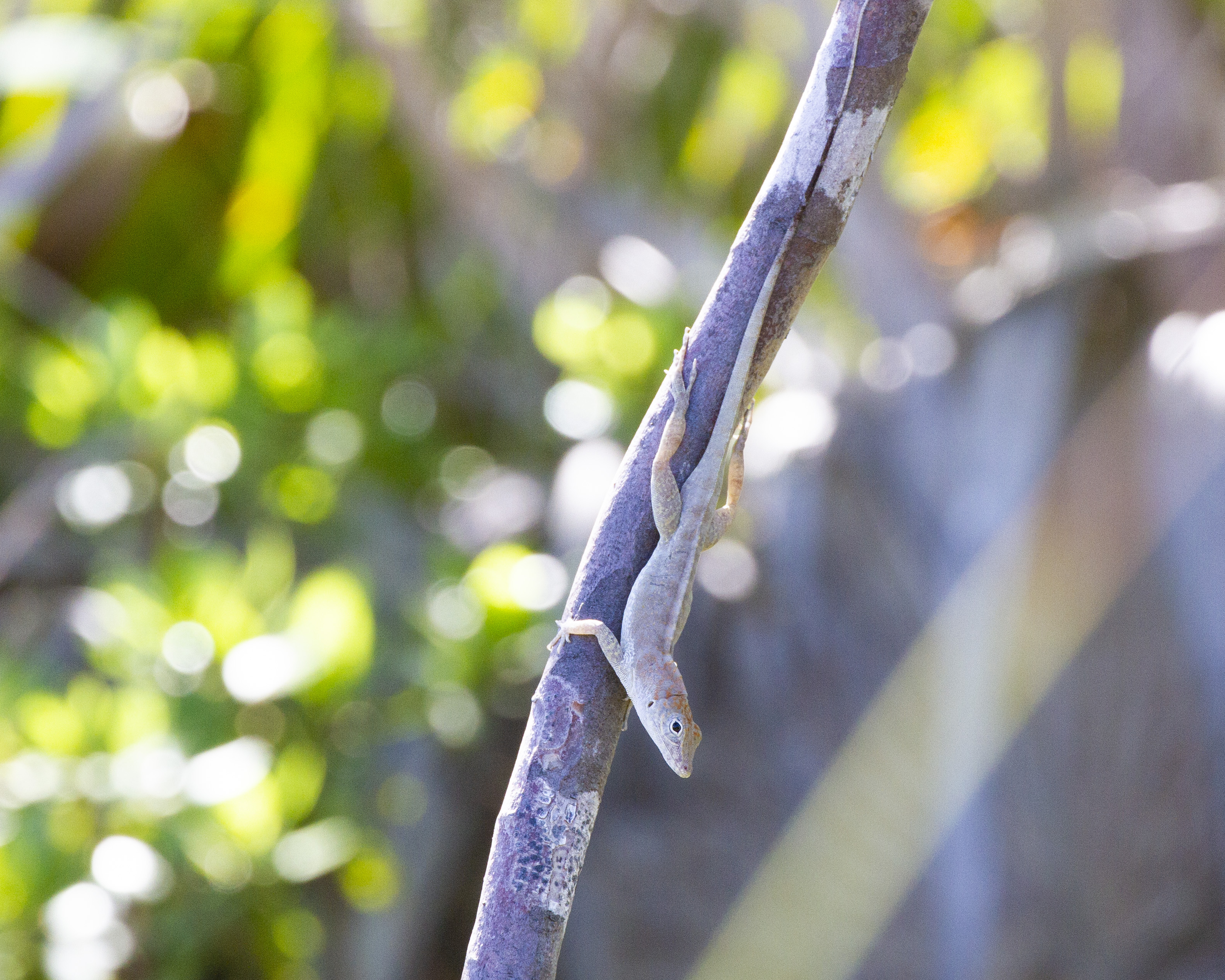
Anolis Scriptus using its toepads to hang on a branch
Colin Donihue
"So we showed this shift in the population," says Colin Donihue, "But we really wanted to know what the next generation looked like."
A year after the storms, Donihue’s team repeated the toepad measurements, but focused on younger lizards that descended from the hurricane survivors. Now, in a new study published this week in Proceedings of the National Academy of Sciences, Donihue’s team reports that future generations of anoles keep that same adaptation. They report that this shift has happened for decades — a long-term and large-scale consequence of hurricanes.
“The results were incredibly striking,” says Michele Johnson, a biology professor at Trinity University with 19 years of experience working with anoles. Johnson, who is unaffiliated with this work, studies the evolution of lizard behavior and physiology. “To find such a strong evolutionary signal of hurricanes at all of these scales is really remarkable — and I think really surprising.”
When a hurricane moves onto land, strong winds can barrel through trees. For animals living in and clinging to those trees, it’s a time to hold on for dear life. Smaller toepads mean smaller chances of surviving.
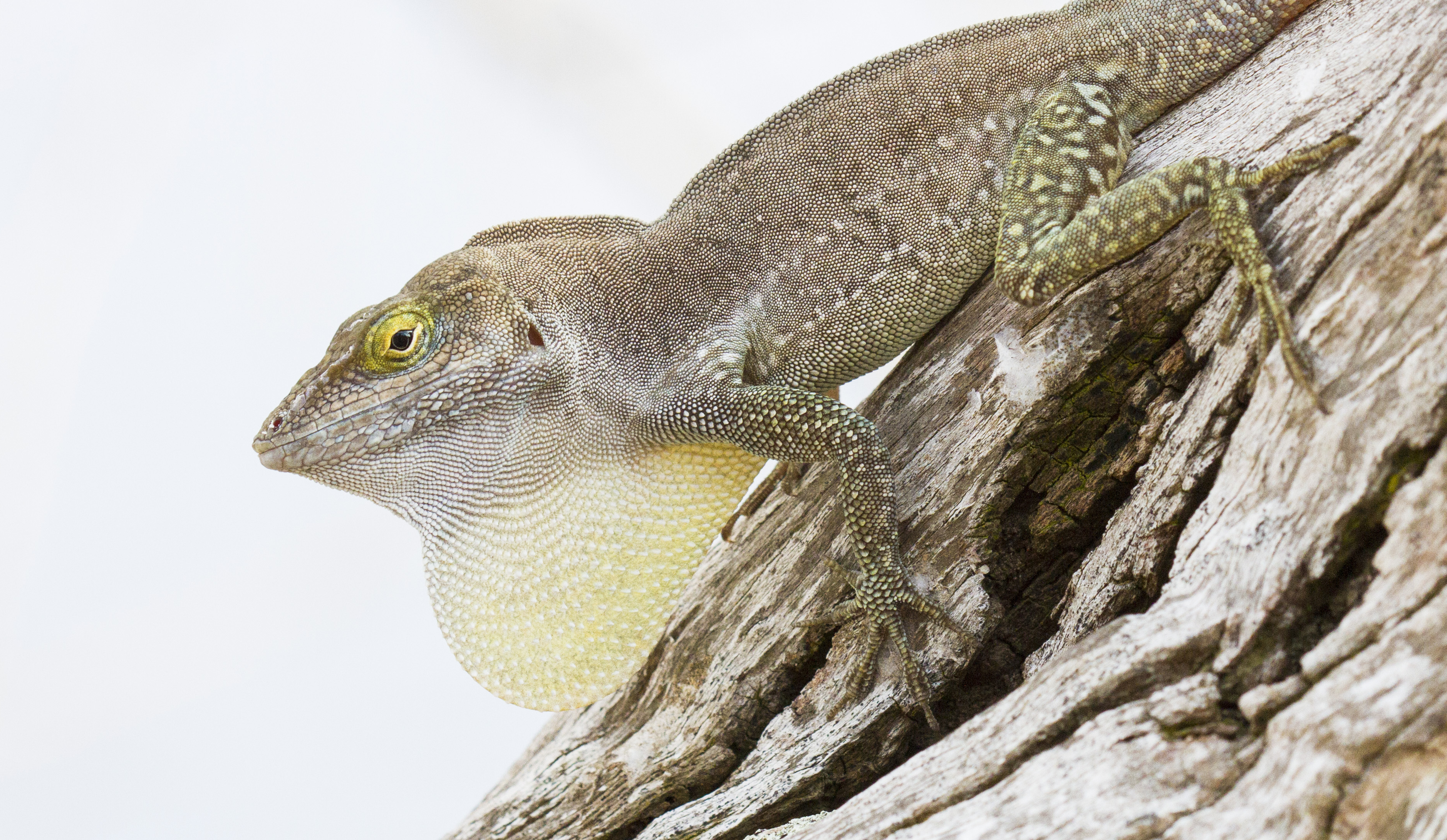
Anolis nubilus showing off its dewlap
Colin Donihue
"If they're blown off of that perch then they're almost certainly blown off into the ocean or onto the ground," Johnson says, about small island lizards. "80 mile an hour winds could be a force that really injures you physically."
The lasting effect in Turks and Caicos anoles was clear, but it only spoke to what happened in that habitat. "The other big question was: is this just a one-off?" says Donihue. "Or is this actually a phenomenon that affects more species that are directly impacted by hurricanes?"
The only way to confirm a far-reaching conclusion about adaptation was, well, for the research to reach farther.
The team pulled 70 years of hurricane data and analyzed it against toepad measurements for 188 different species of anoles across the Caribbean. Rather than island hopping to collect all of those lizards, Donihue used digital scans of museum specimens to measure the tiny toepads. One by one, the team analyzed three specimens for each different lizard species and each historic hurricane path. Shockingly, they found the same pattern around the world: anoles exposed to hurricanes evolved larger toepads.
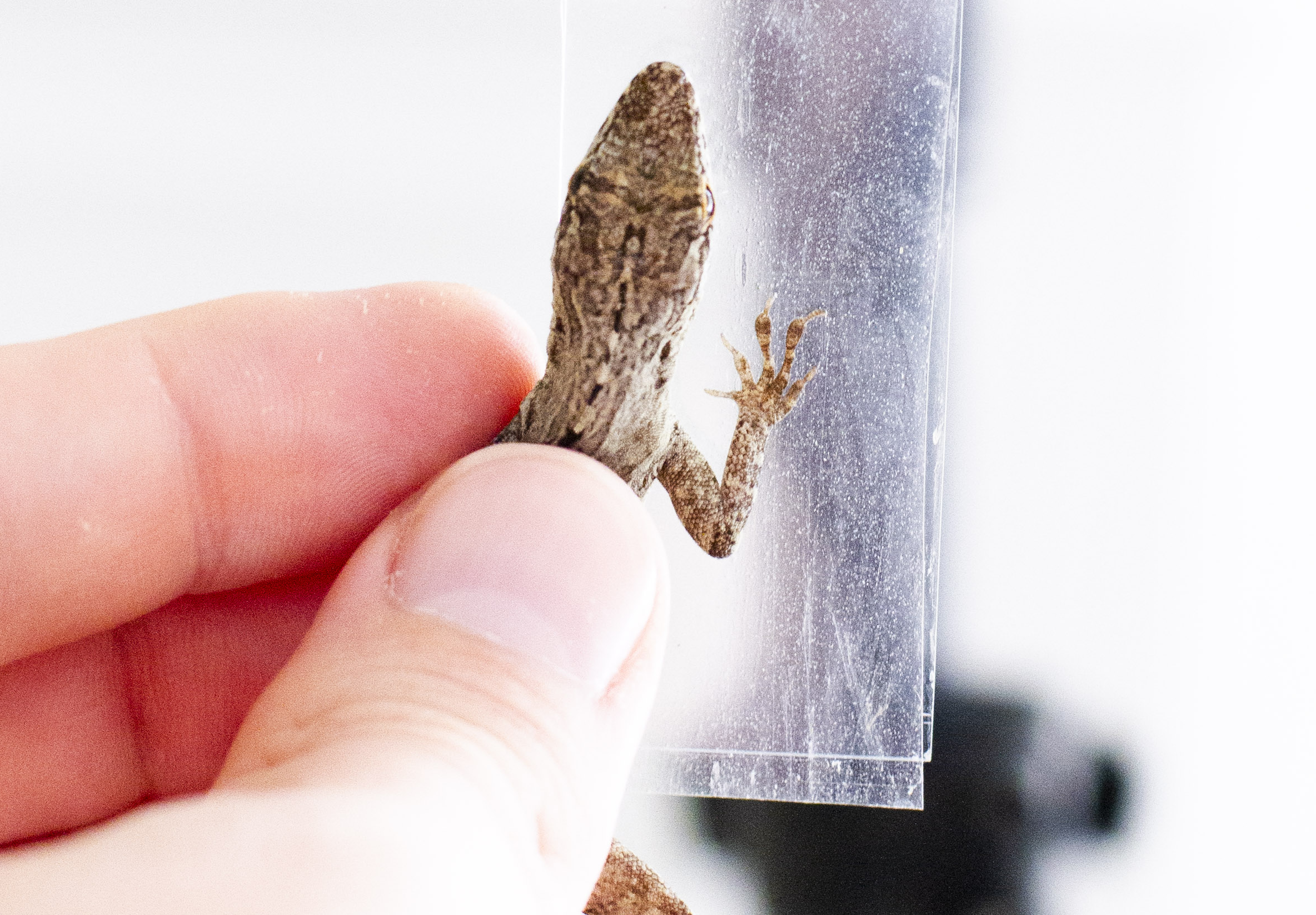
Measuring the force of lizard grip
Colin Donihue
"A core piece of modern evolutionary synthesis is understanding how micro evolutionary processes lead to macro evolutionary patterns," says Shane Campbell-Staton, a professor of biology at UCLA. Campbell-Staton, who is unaffiliated with the work, researches contemporary evolution in the animal kingdom. "This study is a really interesting example of the connections that could be made between the two."
The data proves that the initial observation in Turks and Caicos wasn't just some random isolated incident. An enormous variety of different lizards in several different habitats all show the same rapid evolution. And for years, this specific evolutionary shift is passed from generation to generation.
To be clear, hurricanes aren't causing toepads to grow on individual lizards. Most of the lizards with smaller toepads are just not surviving hurricanes. So with every fatal storm, the average size of toepads in surviving lizards creeps up. This is classic natural selection, and because hurricanes are so violent and fast, it’s happening at lightning-quick speeds.
It’s not common for scientists to find such widespread patterns in response to the very same environmental pressure. In this case, hurricanes are causing the same change within a population, within a species, within an entire genus, and “We don’t have a lot of examples where that type of parallel response is documented,” says Johnson
"Taking those short term changes over the course of a single generation, and expanding that into how those types of events may shape broad geographic patterns," says Campbell-Staton. "[Donihue] bridges the gap in a really unique way that I actually have not seen done,"
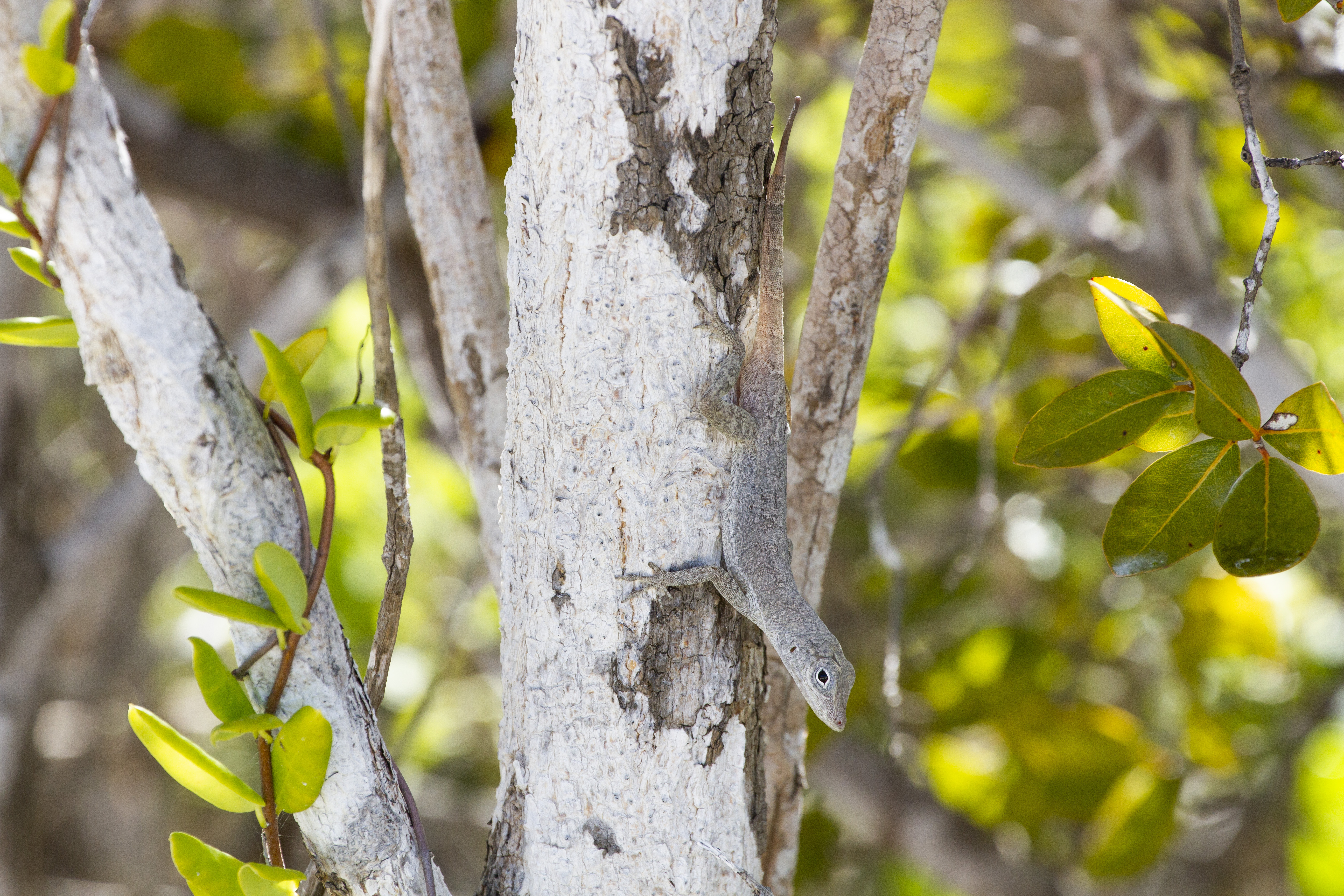
Anolis scriptus
Colin Donihue
Donihue hopes that this work pushes scientists to look for other similar trends in evolution, perhaps even to inform conservation efforts.
“Anytime you can reveal a general pattern about biological response to threatening situations,” says Campbell-Staton. “There is some inherent application to understanding aspects of species conservation”
According to Donihue, this is a story of resilience. Even in the face of otherwise apocalyptic winds supercharged by climate change, these lizards adapt and find a way to hang around.
